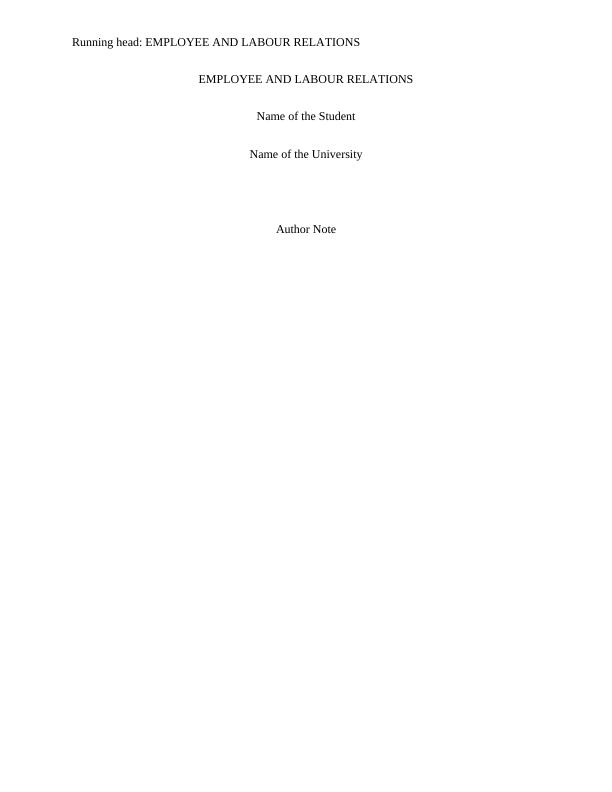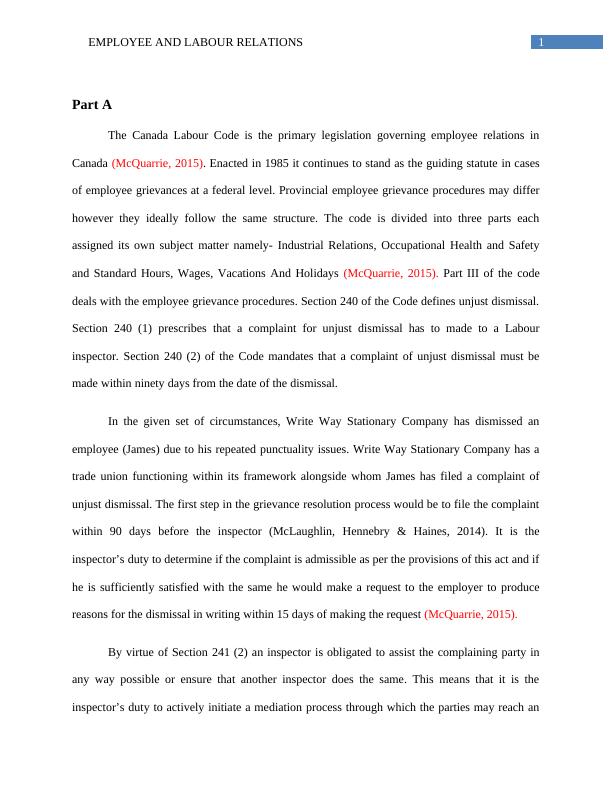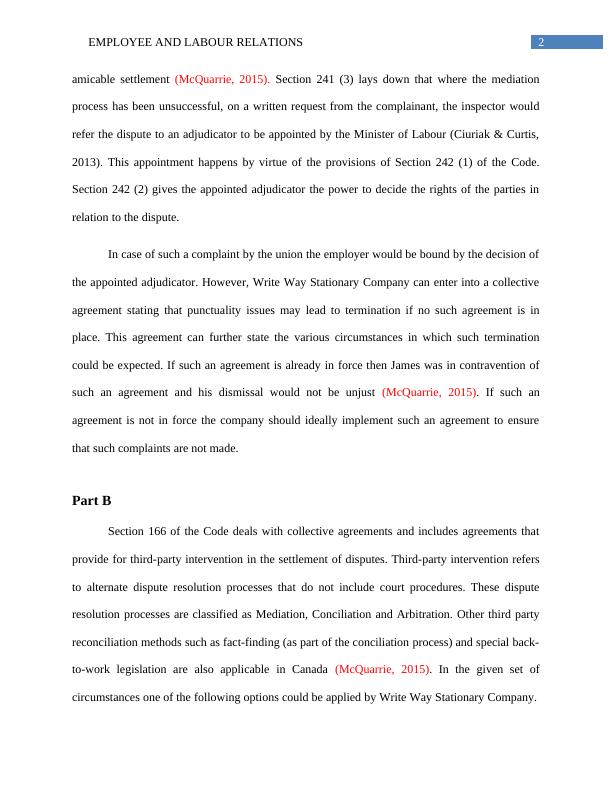The Canada Labour Code
6 Pages1479 Words92 Views
Added on 2021-04-21
About This Document
EMPLOYEE AND LABOUR RELATIONS 1 EMPLOYEE AND LABOUR RELATIONS EMPLOYEE AND LABOUR RELATIONS Name of the Student Name of the University Author Note B The Canada Labour Code is the primary legislation governing employee relations in Canada (McQuarrie, 2015). Section 241 (3) lays down that where the mediation process has been unsuccessful, on a written request from the complainant, the inspector would refer the dispute to an arbitrator to be appointed by the Minister of Labour (
The Canada Labour Code
Added on 2021-04-21
ShareRelated Documents
End of preview
Want to access all the pages? Upload your documents or become a member.



